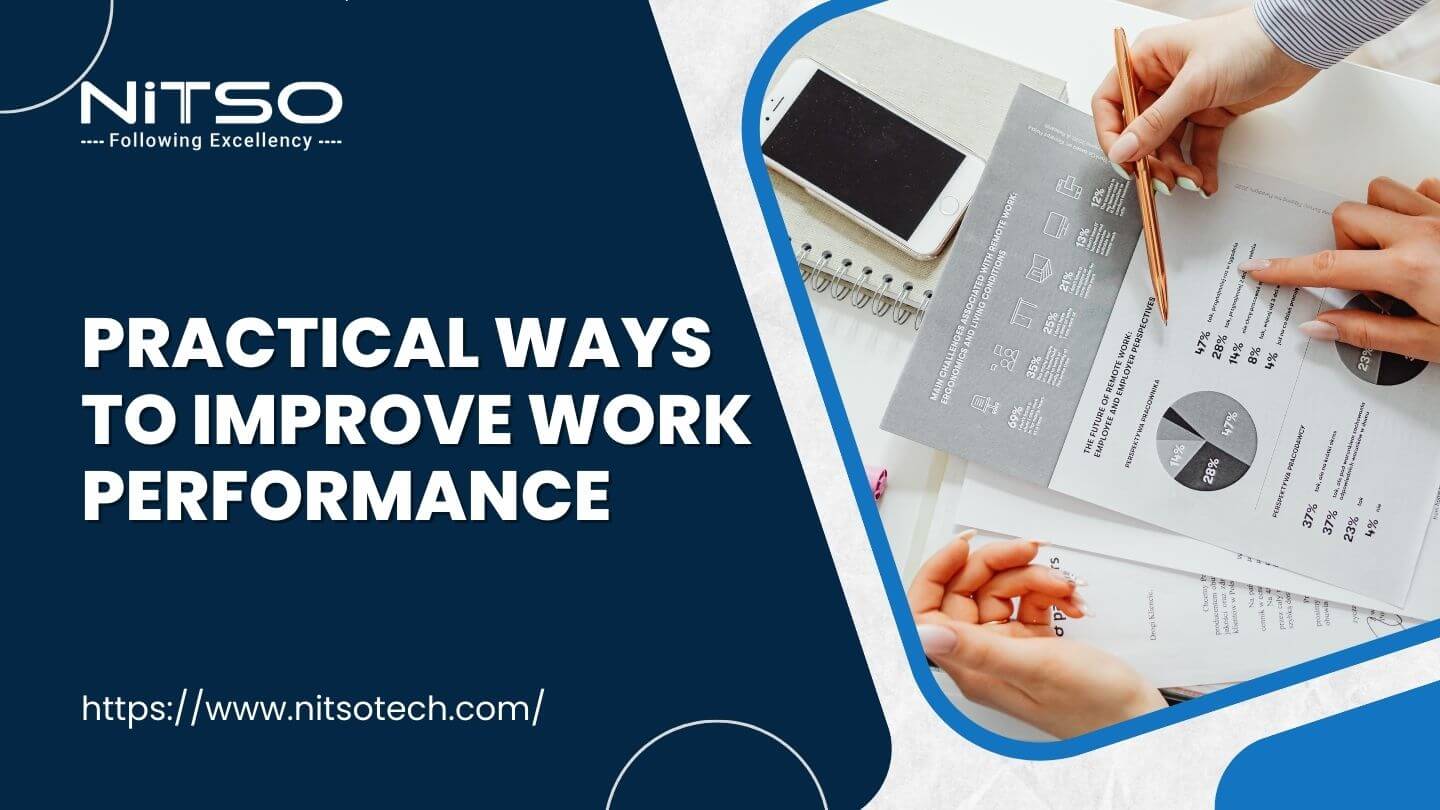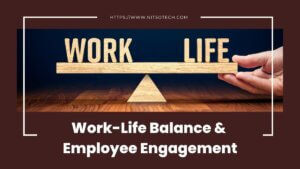In today’s competitive business landscape, organizations are recognizing the importance of continuous improvement and maximizing employee performance. With disruptions and distractions at an all-time high, sustaining peak productivity has become a challenge for individuals and teams.
However, work performance is not stagnant. Rather, it is a dynamic process that can always be enhanced regardless of your current skill level. Even small gains in productivity, efficiency, and workflow quality can have an outsized impact. The key is to adopt a growth mindset focused on progress over perfection.
In this article, we will explore practical, actionable ways to improve work performance. You will learn how to set meaningful goals, prioritize effectively, minimize distractions, and gain skills to reach the next level. With persistence and the right strategies, we all can improve work performance – even thriving top performers looking to go from good to great. By the end, you will have actionable steps to build habits and routines that unlock higher productivity.
Table of Contents
What is Work Performance?
Before we dive into ways to improve work performance, let’s clearly define what we mean by the term “Work Performance”.
Work performance is multi-faceted, encompassing productivity, efficiency, effectiveness, and quality of work output. The key elements include:
- Productivity – This refers to your overall output and volume of work completed within a set time. How much are you able to accomplish daily, weekly, and monthly? Maximizing productivity means achieving more in less time.
- Efficiency – How well are you utilizing your time and resources? Efficiency reflects your ability to avoid waste and complete work optimally.
- Quality – Simply getting more done is pointless without maintaining quality standards. Work performance also entails producing work that consistently meets or exceeds expectations for accuracy, completeness, and excellence.
- Timeliness – Work output needs to be delivered on schedule and within deadlines to be fully effective. Time management abilities are a key component.
- Focus – Being able to tune out distractions and channel concentration enables you to reach advanced levels of work performance. The mental aspect is just as important as the physical effort.
Boosting your work performance requires self-assessment of where you can improve across these areas. The targeted effort is then needed to establish routines, systems, and habits that increase productivity, efficiency, quality, and focus.
Why Continuous Work Improvement Matters
Taking a strategic approach to incrementally improving your work performance over time provides a range of benefits for both employees and organizations. There are key reasons why continuous progress should be a priority:
For Employees
- Increase Earning Potential – As you become more productive and develop specialized skills, you become more valuable. This increased value translates to higher salaries, promotions, and leadership opportunities.
- Gain Job Satisfaction – By constantly learning and challenging yourself, your job becomes more fulfilling and meaningful. Routine and stagnation are replaced with variety and growth opportunities.
- Reduce Stress – With efficient routines and focus abilities, you can get the same amount done in less time and with less mental anxiety. Energy is conserved for other life priorities.
- Achieve Work-Life Balance – Continuous improvement strategies help you maximize work output during dedicated work periods. You then gain more time for personal activities rather than overworking.
- Boost Confidence – As your competencies and productivity rise, so does your job confidence. You become bold in taking on challenges knowing your ever-improving abilities.
For Organizations
- Increase Profitability – When employees produce more high-quality work in less time, organizations spend less overhead while boosting profits.
- Competitive Edge – By developing an adaptable, high-performing workforce, companies stay atop industry disruptions and can fend off competitors.
- Attract Top Talent – The best workers are drawn to organizations focused on maximizing employee output through training and development opportunities.
- Higher Retention – Companies who invest in employee development see greater staff loyalty. Workers are incentivized to stay and grow rather than leave.
- Improved Customer Satisfaction – With knowledgeable, productive teams providing excellent and timely service, customers are more satisfied and loyal.
The overall benefits span from the individual employee level up to the strategic competitive positioning of the entire organization. Thus, a culture of continuous development and work performance improvement should be fostered at all levels for maximum impact.
15 Ways to Improve Work Performance
Implementing even a few of these tips can significantly enhance your work performance over time. The key is to turn intentional effort into consistent habits and routines. Let’s check out the top 15 ways to improve work performance followed by information on how to achieve it:
1. Set specific, measurable goals
Setting concrete short and long-term goals with numeric targets and deadlines provides clarity and motivation. Break major goals down into smaller milestones to make them manageable. Focus on one step at a time.
Actionable tips:
- Making goals as quantifiable as possible
- Separating large goals into monthly, weekly, and daily mini-goals
- Writing down goals and placing them where you’ll see them daily
- Prioritizing top 1-3 milestone goals to focus on at a time
2. Analyze your peak productivity times
Identify the times of day when you have the most energy and focus. Try to align intense project work during those productive hours.
Actionable tips:
- Tracking your energy levels at different times
- Limiting schedule interruptions during productive hours
- Reserving creative work for when you are most alert
- Scheduling meetings and lower focus tasks for less productive times
3. Create an ideal workspace environment
Set up your office or desk to maximize comfort and minimize distractions. This primes you for focus.
Actionable tips:
- Keeping only essential items within sight and reach
- Adjusting lighting, temperature, and chair comfort
- Minimizing clutter and distractions
- Having equipment like chargers, pens, and sticky notes on hand
4. Prioritize your tasks strategically
Sort tasks by importance and urgency to optimize what you work on daily. Arrange your schedule around priority tasks.
Actionable tips:
- Categorizing tasks by urgency/importance
- Completing highest priority tasks during peak energy hours
- Delegating or rescheduling low-priority tasks
- Saying no to additional requests likely to derail the focus
5. Batch similar tasks together
Group-related tasks to maintain focus. For example, make all calls at once rather than at irregular intervals.
Actionable tips:
- Identifying types of tasks you do repeatedly
- Blocking time to do same-category tasks consecutively
- Completing administrative tasks together in blocks of time
- Limiting task switching to avoid mental fatigue
6. Take regular breaks
Short breaks help recharge mental energy and boost productivity. Use techniques like the Pomodoro method.
Actionable tips:
- Working in 25-minute intervals and then taking 5-minute breaks
- Standing up, stretching, and moving around during breaks
- Stepping away after a few intervals for a longer 15-30 minute break
- Avoiding burnout from overwork by strategically renewing focus
7. Set challenging but realistic standards
Determine optimal workload amounts, then increase by small increments to deliberately stretch yourself.
Actionable tips:
- Tracking your current workflow capacity
- Increasing daily/weekly goals by 10% increments
- Continually adjusting as your capabilities expand
- Avoiding overextending by keeping goals reasonable
8. Limit distractions
Identify activities derailing your productivity and establish boundaries around them.
Actionable tips:
- Disabling notifications during focus hours
- Closing apps or tabs not required for current tasks
- Politely declining unnecessary meetings or calls
- Scheduling emails in designated batches rather than constant checks
9. Delegate and collaborate
Distribute workload across colleagues according to strengths. This increases team productivity.
Actionable tips:
- Evaluating direct reports’ strengths and development goals
- Assigning tasks based on capabilities and bandwidth
- Rotating responsibilities to cross-train across roles
- Seeking input from others to leverage their expertise
10. Continuously learn relevant new skills
Seek training and lateral development opportunities to gain abilities needed for career advancement.
Actionable tips:
- Identifying skills needed for future roles
- Taking courses or online learning during downtime
- Shadowing colleagues in other departments
- Attending conferences and seeking mentors
11. Cultivate positive relationships
Build rapport and maintain open communication with colleagues, managers, and clients. This builds trust and eases coordination.
Actionable tips:
- Scheduling regular check-ins
- Expressing genuine interest in others’ priorities and challenges
- Providing and seeking timely, constructive feedback
- Avoiding unnecessary conflict and drama
12. Optimize systems and workflows
Evaluate processes for bottlenecks and inefficiencies. Streamline the most high-impact areas first.
Actionable tips:
- Mapping existing workflows end-to-end
- Brainstorming changes to eliminate clutter
- Implementing automation where possible
- Collaborating with team members to co-create optimal flows
13. Maintain work-life balance
Strive for equilibrium between professional and personal priorities. Prevent burnout through rest and stress management.
Actionable tips:
- Leaving work at reasonable hours
- Taking regular vacations and weekends off
- Nurturing relationships and hobbies beyond work
- Getting adequate sleep, nutrition, and exercise
14. Track and review progress and metrics
Record indicators tied to performance goals. Analyze regularly to guide improvements.
Actionable tips:
- Selecting the most vital metrics to track
- Entering or automating data collection
- Reviewing trends at least monthly
- Adjusting strategies based on insights gained
15. Reward yourself for wins
Reinforce good habits by celebrating progress and milestones. Use small rewards judiciously.
Actionable tips:
- Defining realistic quick wins and longer-term targets
- Treating yourself to an enjoyable activity or gift upon success
- Publicly thanking team members for their contributions and achievements
- Simply pausing to appreciate how far you’ve come
Article you might be intrested in: Recognizing Employees: The Power of Appreciation

Things to Avoid to Stay Productive
Now that we’ve covered proactive strategies to implement, let’s discuss common pitfalls that can sabotage productivity if left unchecked:
1. Procrastination
- Habitually delaying tasks leads to rushed, lower-quality work and missed deadlines.
- Tackle unpleasant or complex tasks first thing when you’re most focused.
- Break large tasks into smaller steps to reduce avoidance.
- Remove distractions and commit to working for a short period without interruption.
2. Distractions
- Unnecessary internet browsing, social media, and personal calls or texts during work hours.
- Disable notifications on your computer and mute your phone to minimize disruptions.
- Close internet tabs and apps are not required to complete immediate work.
- Politely ask colleagues not to disturb you during the heads-down time.
3. Poor Time Management
- Failing to properly allocate appropriate time for each task leads to frequent deadline rushing.
- Realistically estimate task durations and allow buffers for the unexpected.
- Schedule priorities during peak energy hours and less intensive tasks for later.
- Avoid overbooking your days, leaving time to handle emergencies.
4. Fatigue
- Pushing yourself to complete more work when exhausted decreases quality and creativity.
- Make getting adequate sleep a priority and refrain from overdoing caffeine.
- Take regular breaks to stretch, walk, and refresh. Go outside when possible.
- Get re-energized with a longer vacation when experiencing burnout symptoms.
5. Multitasking
- Attempting to juggle multiple tasks or contexts simultaneously divides focus.
- Group similar tasks to complete consecutively during designated blocks.
- Allow yourself to concentrate deeply on one task at a time until a natural transition point.
- For quick interruptions, note your stopping point to restart seamlessly.
By being diligent about minimizing these common productivity pitfalls, you can eliminate the friction preventing you from smooth, focused execution.
Article you might be intrested in: Exploring Retro Pay: Meaning, Calculation, and Legal Implications
7 Books to Help Improve Work Performance
Reading relevant books is a great way to gain new perspectives and actionable advice. Here are 7 excellent reads to help improve your work performance:
- The 7 Habits of Highly Effective People by Stephen Covey: A classic on achieving productivity and fulfilment. Focuses on paradigm shifts to adopt proactive habits.
- Deep Work by Cal Newport: Makes the case for focusing intently without distractions. Outlines skills to master deep work.
- The ONE Thing by Gary Keller: Encourages finding the singular focus that makes the biggest difference, and then protecting time for it.
- Eat That Frog! by Brian Tracy: A motivational book on zeroing in on your most difficult task first to build momentum.
- Make Time by Jake Knapp and John Zeratsky: Tactics to structure days around focused sprints and strategic breaks.
- The Power of Habit by Charles Duhigg: Examines the science behind habit formation. Gives blueprints for reengineering routines.
- Getting Things Done by David Allen: The classic on organizing systems, workflows, and mental processes to maximize productivity.
Common themes across these books include eliminating distractions, managing energy through strategic breaks, developing routines and habits, focusing on high-value tasks, and continuous improvement.
Read at least one of these powerful books from cover to cover. Then return to sections for a refresher when you need extra motivation or ideas. Just committing to the intentional mindset shift reading inspires can improve your performance.
Article you might be intrested in: Maximizing Efficiency and Employee Satisfaction: A Guide to Voluntary Retirement Schemes in HRM
Wrapping Up
Boosting your work performance requires a commitment to ongoing enhancement across multiple aspects. There is no single quick fix that transforms effectiveness overnight. However, by implementing even a subset of the strategies and tips covered, you can gradually increase productivity, efficiency, and focus.
The ultimate goal is to shift your mindset to value continuous incremental progress above all else. Avoid complacency and challenge yourself to higher standards while maintaining balance. Keep an openness to new methods while eliminating detrimental habits that hold you back.
The strategies shared above are just a starting point. Find the combinations that work best for your needs. The key is sustaining self-improvement one day at a time on the never-ending journey to realize your full potential.
Basic Questions Related to Work Performance
What is the best way to improve job performance?
The best way to improve job performance is to set concrete goals, analyze your workflows and capabilities to identify areas for improvement, implement strategies like deep work sessions and productivity frameworks, and continuously expand your skillset through training while limiting distractions. Improving performance is an ongoing process requiring focus and continuous small gains over time.
What are your top 3 areas of improvement?
My top 3 areas for improvement are:
1. Optimizing my daily and weekly schedules to maximize deep work time during peak productivity hours.
2. Reducing distractions and multitasking by batching similar tasks together and strengthening my ability to focus for extended periods.
3. Expanding my skills and expertise through courses and certifications to master new techniques relevant to advancement.
How can you improve employee quality of work?
You can improve employee quality of work through training, clear expectations, feedback systems, and optimization of processes. Provide ongoing training to expand capabilities. Set clear quality and efficiency standards. Implement performance reviews and tracking to identify issues early. Systemize workflows by eliminating redundancies and bottlenecks. Automate where possible.
What are 3 ways to improve work performance?
Three key ways to improve work performance are:
1. Set specific, measurable goals and track progress.
2. Minimize distractions and multitasking by batching tasks.
3. Continuously expand skills and knowledge through training and learning.
What makes a good job performance?
Good job performance includes high productivity, efficiency, accuracy, and quality of work. It means meeting deadlines, working effectively on teams, and demonstrating expertise. Strong performers have good time management abilities, discipline, communication skills, and attention to detail. They are reliable, motivated, and able to prioritize well.
What is improving efficiency?
Improving efficiency means completing work in the optimal way to maximize output and minimize wasted time and effort. Strategies include systematizing processes, leveraging technology, delegating lower-value work, batching similar tasks, and analyzing data to continuously refine workflows.
How can HR improve employee performance?
HR can improve employee performance by implementing training programs, offering development opportunities, conducting performance reviews, creating incentives and rewards for achievements, optimizing hiring for fit, facilitating open communication, and cultivating an ethical, inclusive culture.
How a manager can improve performance?
Managers can improve performance by setting clear expectations, providing support and resources, giving actionable feedback, delegating appropriately, demonstrating leadership ethics, recognizing achievements, encouraging teamwork and collaboration, empowering employees, and modelling strong performance themselves.







0 Comments